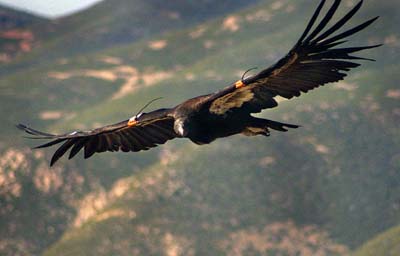The adult female condor that was part of the only breeding pair
of California condors in the county recently died of lead
poisoning, according to a press release from Pinnacles National
Monument.
The adult female condor that was part of the only breeding pair of California condors in the county recently died of lead poisoning, according to a press release from Pinnacles National Monument.
Biologists rushed the endangered bird to the Los Angeles Zoo after it had shown unusual behavior – its legs were not moving properly and it stopped flying as often as it normally had, according to the Pinnacles’ statement released Tuesday. After treatment to help the bird pass the lead out of its system and while showing signs of recovery over a two-week period, the condor perished.
That particular condor was part of the breeding pair that laid an egg at the RS Bar Guest Ranch in Paicines in the spring. Biologists swapped the condor egg at the ranch with one from the LA Zoo that ultimately hatched, with the young condor taking flight in October, the first time in more than 70 years here.
It originally was released in Monterey by the Ventura Wilderness Society but later successfully nested in San Benito County with a condor from the Pinnacles flock.
Veterinarians who examined the bird determined it had an “extremely high level of lead” in its blood stream and digestive tract. Researchers at the University of California, Santa Cruz then conducted tests for the source of the lead and concluded the fragment was consistent with that of lead-based ammunition, according to the press release.
“The loss of this nesting condor is a blow to the recovery program for the species,” said Dale Steele, program manager for the California Department of Fish and Game, in the press release.
The worldwide population of California condors reached a historic low in 1985 when there were just 22 remaining. Recovery efforts like the one at Pinnacles, started in 2003, have helped the population increase to about 350, according to the monument. Lead poisoning is known as one of the primary causes of death for the endangered species.










